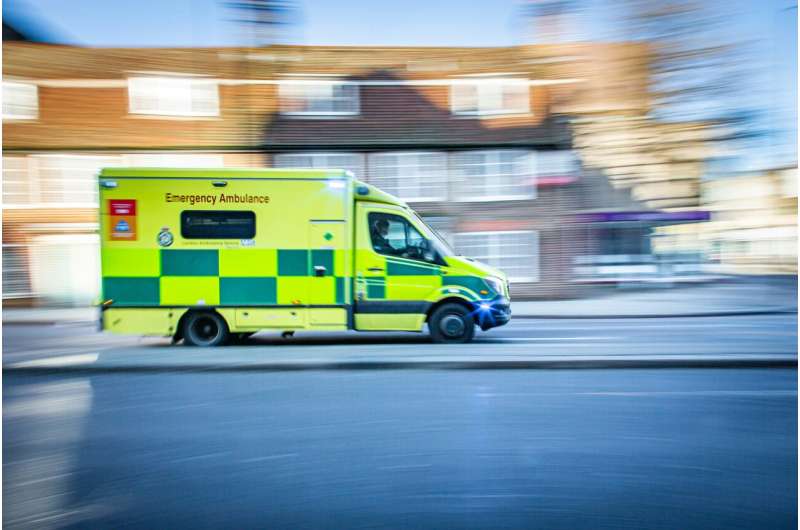Researchers have identified three key signs of major trauma in children that could prompt quicker medical attention in emergency departments. The study, conducted at a major trauma center in the UK, found that children brought in by caregivers rather than ambulance often face delays in receiving specialized care. By recognizing boggy head swelling, abdominal bruising, and thigh swelling or deformity, doctors could prioritize these high-risk patients and potentially improve outcomes. This important finding could be applicable to other emergency care systems globally. Emergency departments play a crucial role in providing lifesaving treatment to severely injured children.

How walk-in pediatric trauma patients face delays in emergency care
The study, conducted at the Bristol Royal Hospital for Children, a level 1 major trauma center in the UK, focused on children under 16 years old who were brought to the emergency department by their caregivers rather than arriving by ambulance. This group of patients often does not receive the same level of pre-hospital emergency service activation and specialized trauma team readiness that children transported by ambulance typically receive.
The researchers analyzed 153 children with major traumas who arrived at the emergency department between August 2020 and May 2022. Of these, 24 had injuries significant enough to be included in the national Trauma Audit and Research Network (TARN) database. Interestingly, none of these 24 patients received trauma team activation upon arrival, despite the severity of their injuries.
The findings revealed that these ‘walk-in wounded’ children faced significant delays in receiving expert emergency care, with an average time of 58.5 minutes before being seen by a doctor, ranging from 3 to 168 minutes.
Three important signs of serious injury in children at the emergency room
The study identified three distinct physical signs that should prompt immediate attention from emergency department staff: boggy swelling to the head, abdominal bruising, and thigh swelling or deformity. These external indicators of serious injury could serve as triage alerts, triggering a rapid review by a senior clinician and potentially prioritizing the treatment of these high-risk patients.
Of the 24 children included in the study, the majority (54%) had head injuries, 33% had injuries to their arms or legs, and 12.5% had intra-abdominal injuries. 10 of the 24 children (42%) required surgery, with seven needing surgery for a broken thigh bone and three requiring neurosurgery to address brain injuries or skull fractures.
The researchers believe that the adoption of these triage alerts could make a significant difference in how quickly these severely injured children are reviewed by a senior clinician and, ultimately, in their treatment outcomes. By recognizing the three key signs of major trauma, emergency departments could better allocate resources and activate trauma teams to provide the specialized care these patients require.
Dr. Robert Hirst, who led the study, emphasized the importance of considering the possibility of non-accidental injury, particularly in children under the age of one. Robust safeguarding processes and multidisciplinary governance review are vital to ensure the safety and well-being of these vulnerable patients.
Overall, the study highlights a critical gap in the care of severely injured children who do not arrive at the emergency department via ambulance. By implementing triage alerts for the three key signs of major trauma, emergency departments can potentially improve the management and outcomes of this high-risk population of pediatric patients.
Future improvements in emergency care for seriously injured children
In response to the findings, the research team at the Bristol Royal Hospital for Children is working to improve their internal processes to ensure that injured children with external evidence of trauma are promptly reviewed by a senior clinical decision-maker.
Dr. Hirst and his colleagues plan to reassess the impact of these changes on their key performance indicators and outcomes for these children. By implementing triage alerts and prioritizing the review of patients with the identified signs of major trauma, the emergency department aims to reduce delays and provide timely, specialized care for this vulnerable population.
Dr. Barbra Backus, the chair of the EUSEM abstract selection committee and an emergency physician in Rotterdam, The Netherlands, highlighted the significance of this study. She emphasized that if pre-hospital emergency services have not been activated for a severely injured child, the caregiver or emergency department staff may not immediately recognize the severity of the injury. The adoption of the three-point triage system could make a substantial difference in how quickly these patients are reviewed by a senior clinician and, potentially, in their overall outcomes.
While health systems and procedures for dealing with pediatric patients who arrive at emergency departments by means other than ambulance may vary across different countries and centers, the findings from this study deserve close attention from emergency departments worldwide. By identifying and addressing the unique challenges faced by the ‘walk-in wounded’ pediatric trauma patients, healthcare providers can work towards improving the quality of care and ensuring the best possible outcomes for this vulnerable group.
